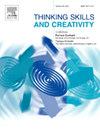将21世纪的能力融入高等教育:来自越南讲师视角和教学策略的见解
IF 4.5
2区 教育学
Q1 Social Sciences
引用次数: 0
摘要
整合21世纪的技能、沟通、协作、批判性思维和创造力(4c)在当代高等教育中至关重要,可以让学生为快速发展的全球格局做好准备。尽管广泛的理论强调,这些能力如何在越南大学实施的经验见解仍然有限。本研究旨在探讨越南高等教育中4c整合的程度,并确定讲师对使用的教学策略和遇到的障碍的意见。为了实现这一目标,采用多阶段机构抽样方法,在越南四个主要城市的多个机构中进行了一项横断面定量研究,该研究使用了经过调整的、经过验证的调查。共有140名有效的讲师回答符合纳入标准,反映了数据收集窗口期间的无障碍人口。使用SPSS 26中的描述性统计(频率、平均值、标准差)和内部一致性估计分析数据。描述性分析表明4c的广泛整合,讲师最一致地采用结构化的协作和创造力策略(例如,小组活动和在资源选择上给予学生自主权)。相反,基于项目的学习、协作在线任务和图形组织者的使用被报道为不太一致的应用。不同策略之间的模式差异突出了教学和制度障碍,包括技术基础设施不足、课程僵化和专业发展机会有限。研究结果通过提供实践模式和制约因素的具体背景证据,扩展了现有文献,强调需要有针对性的制度支持,以实现4c的全面实施。其影响包括加强基础设施的政策措施、更大的课程灵活性和持续的专业学习,以加强讲师将21世纪技能融入教学的能力。本文章由计算机程序翻译,如有差异,请以英文原文为准。
Embedding 21st-Century Competencies into Higher Education: Insights from Vietnamese Lecturers’ Perspectives and Pedagogical Strategies
The integration of 21st-century skills, communication, collaboration, critical thinking, and creativity (the 4Cs) is pivotal in contemporary higher education to prepare students for a rapidly evolving global landscape. Despite widespread theoretical emphasis, empirical insights into how these competencies are implemented in Vietnamese universities remain limited. This study aims to explore the extent of 4Cs integration in Vietnamese higher education and to identify lecturers' opinions on the instructional strategies used and the barriers encountered. To address this aim, a cross-sectional quantitative study using an adapted, validated survey was distributed electronically across multiple institutions in four major Vietnamese cities, employing a multi-stage institutional sampling approach. A total of 140 valid lecturer responses met the inclusion criteria, reflecting the accessible population during the data collection window. Data were analyzed using descriptive statistics (frequencies, means, standard deviations) and internal-consistency estimates in SPSS 26. Descriptive analyses indicate widespread integration of the 4Cs, with lecturers most consistently employing structured collaboration and creativity strategies (e.g., group activities and granting student autonomy in resource selection). Conversely, project-based learning, collaborative online tasks, and the use of graphic organizers were reported as less consistently applied. Patterned differences across strategies highlight instructional and institutional barriers, including inadequate technological infrastructure, rigid curricula, and limited professional development opportunities. The results extend the existing literature by providing context-specific evidence on practice patterns and constraints, emphasizing the need for targeted institutional support to enable comprehensive implementation of the 4Cs. Implications include policy measures to enhance infrastructure, greater curriculum flexibility, and sustained professional learning to strengthen lecturers' capacity to embed 21st-century skills in teaching and learning.
求助全文
通过发布文献求助,成功后即可免费获取论文全文。
去求助
来源期刊

Thinking Skills and Creativity
EDUCATION & EDUCATIONAL RESEARCH-
CiteScore
6.40
自引率
16.20%
发文量
172
审稿时长
76 days
期刊介绍:
Thinking Skills and Creativity is a new journal providing a peer-reviewed forum for communication and debate for the community of researchers interested in teaching for thinking and creativity. Papers may represent a variety of theoretical perspectives and methodological approaches and may relate to any age level in a diversity of settings: formal and informal, education and work-based.
 求助内容:
求助内容: 应助结果提醒方式:
应助结果提醒方式:


